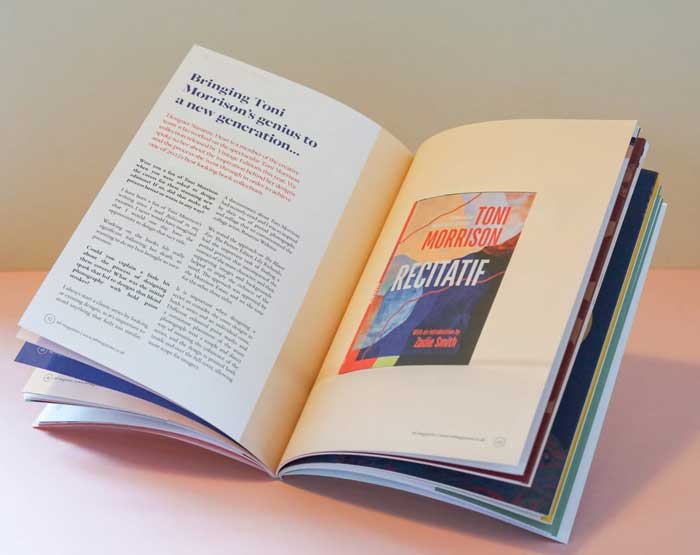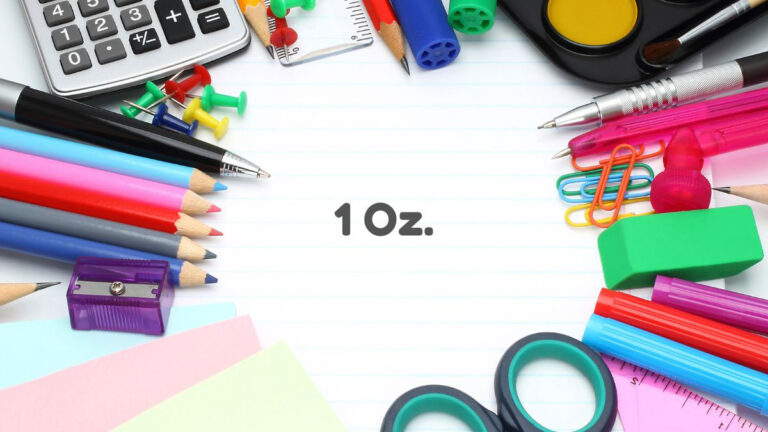How Much Does Magazine Weigh: Understanding Factors and Impacts
Ever wondered how much a magazine weighs? It’s not just about the glossy cover or the captivating content inside. The weight of a magazine hinges on two key factors: the number of pages and the paper’s weight in grams per square meter (gsm). On average, a standard magazine tips the scales at 6 to 12 ounces, but this can vary significantly based on its dimensions and material.
Understanding a magazine’s weight is crucial, especially when it comes to mailing costs. If your publication weighs less than 33 ounces, you’ll benefit from fixed mailing rates, but anything beyond that will see costs rise as weight increases. Knowing the ins and outs of postal regulations can help you manage these expenses effectively.
Whether you’re a publisher or just curious, grasping the nuances of magazine weight can provide valuable insights into production and distribution logistics. Dive into this topic and discover how these factors influence the world of print media.
Key Takeaways
- The weight of a magazine primarily depends on the number of pages and the paper’s weight, typically measured in grams per square meter (gsm).
- Average magazines weigh between 6 to 12 ounces, but variations exist based on dimensions, paper quality, and additional content like inserts.
- Understanding and managing magazine weight is crucial for controlling mailing costs, particularly because U.S. postal rates favor magazines under 33 ounces.
- The choice of paper type, including coated vs. uncoated and paper thickness, significantly influences magazine weight, affecting production and distribution logistics.
- Calculating a magazine’s weight involves a formula considering page dimensions, count, and gsm, which is crucial for planning mailing and packaging needs efficiently.
- Accurate weight calculation and strategic choice of shipping methods can optimize shipping costs, ensuring cost-effective distribution and logistics management.
Understanding Magazine Weight
Magazine weight plays a critical role in both production and distribution. This weight depends on factors like page count and paper type used. A standard-sized magazine, featuring around 8.5 x 11 inches, typically weighs between 6 and 12 ounces (approximately 170-340 grams). There’s variety here since magazines can have different paper qualities and additional inserts.

Factors Influencing Weight
- Number of Pages: More pages equate to increased weight. An example is PCWorld Mexico, weighing 149 grams with 65 pages, while gamers Mexico reaches 340 grams with 105 pages.
- Paper Type: Magazines often use 50–60-pound paper for interior pages. Covers might use heavier stock, like 80 or 100 pounds.
- Additional Content: Inserts, ads, or booklets add weight. Higher-quality paper likely contributes more, impacting overall heft.
Weight and Distribution Costs
For mailing purposes, weight significantly affects costs. Standard U.S. postal rates apply to pieces under 33 ounces, determined by sorting method. Exceeding this weight incurs additional charges, escalating as weight increases. Consequently, managing a magazine’s weight influences production decisions, especially under budget constraints.
Understanding these elements helps optimize magazine production and distribution, ensuring efficient logistics and cost management.
Factors Affecting Magazine Weight
When considering the weight of a magazine, several variables come into play. Understanding these can help manage production and distribution costs effectively.
Paper Type and Quality
Paper selection impacts a magazine’s weight significantly. Choices in paper weight and coating type play a crucial role.
- Paper Weight: Inside magazine pages typically use paper that weighs between 50# and 70# lb, with covers often reaching 80# to 100# lb. Translated to gsm, this ranges from approximately 75 gsm for inside pages to 216 gsm for cover stock.
- Coated vs. Uncoated Paper: Coated options, such as gloss or matte, introduce extra weight due to the coating that enhances durability. This feature is often preferred for its visual appeal.
Number of Pages and Thickness
The total number of pages directly correlates with the magazine’s weight. Knowing how each page contributes to the overall mass is vital.
- Page Count: A higher number of pages results in a heavier magazine. For instance, a 32-page issue on 60# paper weighs less than 33 ounces, impacting postal costs positively.
- Thickness: Thicker paper increases weight but can add to the perception of quality and durability, striking a balance between cost and appeal.
Calculating Magazine Weight
Understanding how to calculate a magazine’s weight helps in managing mailing costs and packaging requirements. This section explores basic calculations and how to use online tools.
Basic Weight Calculation Formula
Determining a magazine’s weight involves a formula that considers page dimensions, page count, and paper density. Use the following equation:
To find the weight of a magazine (MGW), use this formula: MGW=PH/39.37×PW/39.37×P×GSM
Here’s what the terms mean:
- MGW : Magazine weight (in grams).
- PH : Page height (inches).
- PW : Page width (inches).
- P : Number of pages in the magazine.
- GSM : Paper density (this is a number that tells us how thick/heavy the paper is, measured in grams per square meter).
Example: Find the Weight of a Magazine
Let’s figure out the weight of a magazine that has:
- 8 inches page height.
- 10 inches page width.
- 25 pages .
- Uses 200 GSM paper.
Using the formula: MGW=8/39.37×10/39.37×25×200
Step-by-Step Calculation:
- Convert the page height and page width from inches to meters (since 39.37 inches is 1 meter):
8/39.37=0.2032meters (Page height)
10/39.37=0.254meters (Page width) - Multiply everything together: 0.2032×0.254×25×200=258grams
So, the magazine weighs 258 grams !
Using Online Weight Calculators
Online calculators provide a convenient solution for determining magazine weight without manual calculations. Enter page height, page width, number of pages, and paper GSM into such tools to obtain precise results instantly. For instance, platforms like Magazine Weight Calculator simplify this process, ensuring you acquire accurate data efficiently.
These tools help you estimate costs, plan distribution, and manage production logistics by quickly computing the weight of different magazine configurations.
Impact of Weight on Shipping
Understanding magazine weight is crucial for managing shipping efficiency and costs. Factoring weight ensures that you choose the most cost-effective shipping options.
Choosing the Right Shipping Method
Selecting the appropriate shipping method depends on both the actual weight and the dimensional weight of the package, whichever is greater. Use actual weight for smaller magazines, like those weighing under 6 ounces. For larger publications, the dimensional weight often takes precedence. Carriers like UPS, FedEx, and USPS use specific divisors to calculate dimensional weight: 139 for UPS and FedEx and 166 for USPS. Compare actual and dimensional weight to decide which option yields lower shipping costs. For lightweight magazines, use USPS First-Class Mail, which offers fixed rates for items below 13 ounces.
Controlling Shipping Costs
Reducing shipping costs requires attention to packaging and weight variables. Lighter, compact packaging minimizes dimensional weight. If a standard magazine weighs between 6 to 12 ounces, use packaging that closely matches these dimensions to avoid unnecessary bulk. Bulk shipping options reduce costs for larger quantities, leveraging economies of scale. Use online tools to estimate shipping costs before finalizing orders. These tools offer insights into cost breakdowns by inputting magazine dimensions and weights, allowing you to make informed decisions when planning distribution logistics.
Conclusion
Understanding the weight of a magazine is crucial for managing costs and logistics effectively. By considering factors like page count, paper type, and additional content, you can better estimate the weight and plan for efficient distribution. Using online calculators simplifies this process, allowing you to make informed decisions about shipping methods and packaging. Remember that choosing the right paper and optimizing page count not only affects weight but also enhances the magazine’s appeal and quality. By balancing these elements, you can achieve cost-effective production and distribution, ensuring your magazine reaches its audience efficiently.







